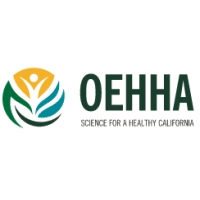 California’s Proposition 65 — or The Safe Drinking Water and Toxic Enforcement Act of 1986 — is administered by the Office of Environmental Health Hazard Assessment (OEHHA), which is a segment of the California Environmental Protection Agency (Cal/EPA). Prop 65 requires the State to make available to the public a list of chemicals known to cause cancer, birth defects, or other reproductive harm. Further, Prop 65 mandates that the list be updated, at a minimum, once per year.
California’s Proposition 65 — or The Safe Drinking Water and Toxic Enforcement Act of 1986 — is administered by the Office of Environmental Health Hazard Assessment (OEHHA), which is a segment of the California Environmental Protection Agency (Cal/EPA). Prop 65 requires the State to make available to the public a list of chemicals known to cause cancer, birth defects, or other reproductive harm. Further, Prop 65 mandates that the list be updated, at a minimum, once per year.
Since the first iteration of the list in 1987 (when it included 30 chemicals), it has swelled to name 800 different substances.
Despite the growth of the list, it hasn’t necessarily been smooth sailing for Prop 65 for the last three decades. While there has been much support for the initiative that California voters approved more than 30 years ago, there has also been much criticism, especially when it comes to enforcing the law. And just this past March, it was the subject of a lawsuit: Monsanto Co. v. Office of Environmental Health Hazard Assessment (“OEHHA”), No. 16-CE CG 00183. The case addressed the question of whether Glyphosate — a chemical used in the Monsanto herbicide Round-Up® — should appear on the Prop 65 list.
And this brings up the question of how a chemical lands on the list in the first place. On its website, the OEHHA explains the four ways this can occur.
The roads that lead to the list
“A chemical can be listed if either of two independent committees of scientists and health professionals finds that the chemical has been clearly shown to cause cancer or birth defects or other reproductive harm.”
Those committees are the Carcinogen Identification Committee (CIC) and the Developmental and Reproductive Toxicant (DART) Identification Committee; they fall under the umbrella of OEHHA’s Science Advisory Board. The governor appoints committee members who have earned the designation of “State’s Qualified Experts” in terms of assessing chemicals for Prop 65 inclusion.
The second way a chemical can get tagged as a Prop 65 substance involves the expert opinion of an organization considered to be an “authoritative body” by the CIC or the DART Identification Committee. For instance, the U.S. Food and Drug Administration (FDA), the U.S. Environmental Protection Agency (U.S. EPA), and the International Agency for Research on Cancer (IARC).
Third, if a state or federal agency already stipulates that a chemical be labeled with a warning about the risk of cancer, birth defects, or reproductive harm, it will land on the Prop 65 roster. This is often the case with prescription meds required by the FDA to wear advisory notices.
And lastly, if a chemical’s properties match certain scientific criteria recognized by the California Labor Code as causing cancer, birth defects, or reproductive harm, it will make it on the Prop 65 list. This was the means used to compile the first chemical list in 1987.
Plaintiff claimed that CA agency violated constitution
Monsanto alleged that the OEHHA inappropriately tagged Glyphosate as a Prop 65 chemical and that the State was in violation of state and federal constitutions in doing so. The trial court disagreed with each of Monsanto’s allegations, and therefore, Glyphosate was added to the Proposition 65 list early last month.
The plaintiff claimed that the OEHHA acted unconstitutionally when it relied on the IARC’s conclusion that Glyphosate may cause cancer. The court had this to say: “the … listing mechanism does not constitute an unconstitutional delegation of authority to an outside agency, since the voters and the Legislature have established the basic legislative scheme and made the fundamental policy decision with regard to listing possible carcinogens under Proposition 65.”
Further, the court struck down Monsanto’s claim that the OEHHA violated due process, stating that due process isn’t relevant to an OEHHA decision on the grounds that it is a “quasi-legislative act.”
Company cites First Amendment infringement
Monsanto was also unsuccessful in getting the court to agree with its argument that including Glyphosate on the Prop 65 list would hinder the company’s constitutional right to free speech. Monsanto claimed that a product label warning against the possible cancer-causing risks of the chemical would mislead the public. The company also tried to prove that the chemical was not carcinogenic when it presented the U.S. EPA’s and the European Food Safety Authority’s (EFSA) assessment that Glyphosate did not have cancer-causing properties.
Regarding that allegation, the court pointed out that despite the Prop 65 listing requirement, Monsanto may never be required to include a label warning. Therefore, the company’s First Amendment argument was set aside. Also, the court asserted that the OEHHA retains the right to acknowledge Glyphosate as having no substantial cancer-causing risk, even with the chemical on the Prop 65 list.
However, the OEHHA website gives the following instructions: “Businesses are required to provide a ‘clear and reasonable’ warning before knowingly and intentionally exposing anyone to a listed chemical. Once a chemical is listed, businesses have twelve months to comply with warning requirements.”
Monsanto appealed the trial court’s ruling and sought — unsuccessfully — to prevent the chemical from joining the Prop 65 roster in the meantime. The appeal is pending in California’s Fifth District.
This blog post is provided for educational purposes only and is not offered as, and should not be relied on as, legal advice. Any individual or entity reading this information should consult an attorney for their particular situation. For more information/questions regarding any legal matters, please email [email protected] or call 310.203.2800.